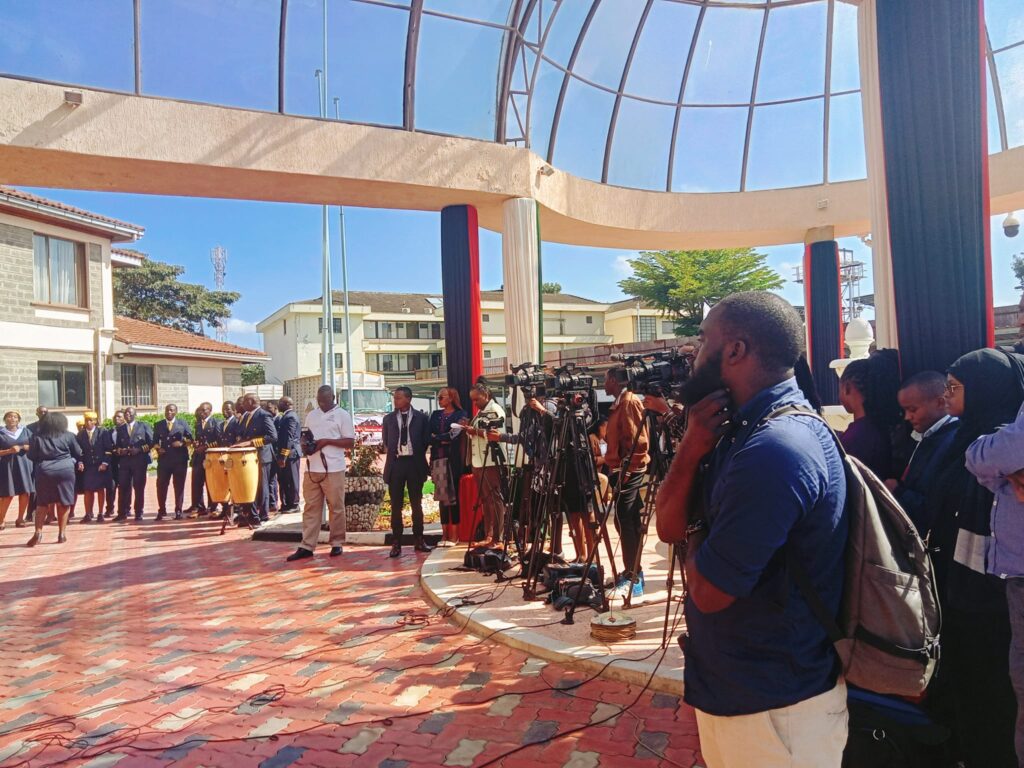Junior Secondary Schools in Molo Sub-County, Nakuru County, are set to receive Grade Nine textbooks starting next month, as part of the government’s nationwide textbook distribution program.
The exercise, which will run from October 1, 2024, to January 31, 2025, aims to equip over 20,000 schools identified by the Ministry of Education to host Junior Secondary Schools (JSS).
This distribution is part of a broader initiative to supply more than 9.6 million textbooks to public primary schools across Kenya, targeting learners from Grade One to Grade Nine.
According to the Principal Secretary in the State Department for Basic Education, Dr. Belio Kipsang, the government is on track to achieve a 1:1 pupil-to-textbook ratio, ensuring that every learner has access to the necessary learning materials.
“Kenya is leading the way in East Africa with this policy, ensuring that every learner from Grade One to Grade Nine has their own textbook.
This ratio will significantly enhance the quality of education,” Dr. Kipsang said during an inspection of schools in Nakuru County.
Dr. Kipsang also confirmed that all nine examinable subjects for Grade Nine will have the necessary textbooks, which have been developed and approved by the Kenya Institute of Curriculum Development (KICD).
The textbooks, prepared by leading publishers such as Oxford University Press, Kenya Literature Bureau, Longhorn Publishers, and others, meet rigorous international standards.
While public schools will receive the textbooks at no cost, private schools will be required to purchase them from bookshops.
Dr. Kipsang emphasized that only KICD-approved materials should be used in schools to ensure consistency with the curriculum.
In addition to textbook distribution, the government is addressing staffing challenges in JSS.
Dr. Kipsang revealed that the Teachers Service Commission (TSC) will convert over 46,000 Junior Secondary School intern teachers to permanent and pensionable terms, supported by a Sh18 billion budget allocation.
He further announced plans to recruit 20,000 new intern teachers to bring the total number of JSS educators to 76,000.
To accommodate the growing number of students, the government is also constructing 11,000 new classrooms nationwide.
Dr. Kipsang added that schools will use the sh 3,000 per student capitation funds for maintenance and desk furnishing to improve the learning environment.
Regarding academic assessments, Dr. Kipsang disclosed that the Ministry of Education conducted a pilot program in July 2024 to prepare Grade Nine learners for their exams next year.
Another pilot will take place later this year for Grade Six students, focusing on their upcoming assessments.
The PS explained that these assessments are essential for both students and teachers to familiarize themselves with the new system, particularly as learners transition to Grade Ten.
As part of the Competency-Based Curriculum (CBC), students in Grade Ten will have the opportunity to choose between different learning pathways, including STEM, humanities, creative arts, and sports.
Dr. Kipsang noted that each school will be required to offer at least two pathways, with STEM being mandatory.
To support this, the government plans to build science laboratories in every school, with virtual labs introduced in schools that currently lack these facilities.
In response to recent school fires, Dr. Kipsang stated that the government would review the existing school safety manual and implement stricter punitive measures for institutions that fail to comply with safety regulations, aiming to curb the rising cases of school infernos.
With these initiatives, the government is working to improve not only the quality of education in Kenya but also the infrastructure and safety measures in schools across the country.
Baby Killed, 14 Others Seriously Injured In Truck-Matatu Collision In Narok

